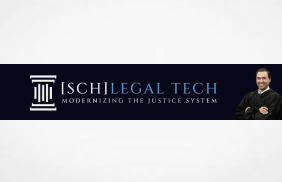The rain came down in sheets. I could barely see the taillights of the car ahead as my windshield wipers fought a losing battle against the deluge. For several hours, my Full Self-Driving system had been confidently navigating the highway. Then the storm came.
Neither I nor the sophisticated AI driving system could properly see through the downpour. What had been a marvel of technology moments before was now struggling with the most basic task: staying safely on the road. The message was clear—it was time for human judgment to take over.
This moment of transition crystalized a truth about artificial intelligence that applies well beyond our highways: when conditions deteriorate beyond an AI’s training parameters, human intervention becomes not just advisable but essential.
AI in the Everyday Legal Landscape
In our justice system, we face a similar reality. AI tools can process cases, analyze precedents, and suggest outcomes with remarkable efficiency under ideal circumstances. Like FSD on a clear day, these systems impress us with their capabilities. They reduce backlogs, standardize routine decisions, and free human professionals to focus on more complex matters.
Consider something as straightforward as a parking ticket dispute. An AI system could efficiently process these cases—checking violation codes, verifying timestamps, and confirming parking zone restrictions. But what happens when someone parked illegally because they were rushing their child to the emergency room? A human judge might weigh this context and show leniency, while an AI might simply apply “violation = fine” logic, missing the human circumstances that often matter in legal decisions.
When the Legal Storm Clouds Gather
Yet, what happens when the legal equivalent of a storm hits? How will AI handle a case with unprecedented facts, cultural nuances no algorithm could grasp, or high emotional stakes requiring deep empathy? In these critical moments, AI systems may falter as dramatically as my FSD did in the downpour. While algorithms excel at routine decisions, they cannot replicate human judgment’s depth and sensitivity in complex, emotionally charged scenarios.
Unlike a weather emergency, legal “storms” aren’t always obvious. A custody dispute with complex family dynamics or a case with conflicting testimony might not trigger clear warning signs. One practical solution could be implementing a “confidence meter” for AI systems. If the AI is less than 70% certain about its recommendation—whether on contract interpretation or sentencing guidelines—it would automatically flag the case for human review, creating a transparent mechanism for identifying when technology might be reaching its limits.
AI as the Trusty Sidekick, Not the Hero
My white-knuckle drive offers two crucial lessons. First, we must explicitly recognize AI’s limitations in extreme or novel situations. Second—and perhaps more importantly—we must establish clear and timely protocols for human intervention. Delaying the transition from AI to human control, even by seconds, can lead to severe consequences. In legal contexts, allowing AI to operate beyond its competence might result in unjust rulings, overlooked rights, or lasting harm.
The most effective role for AI is as a sidekick, not the star. It excels at supporting tasks—sorting through mountains of legal documents, identifying patterns across cases, or handling standardized filings. Like a reliable GPS on familiar routes, it navigates the routine stretches with ease. But when the path becomes complex, with high stakes or nuanced judgment calls, humans should take the lead. This isn’t about AI failing—it’s about understanding its proper supporting role in the pursuit of justice.
Training for the Moment of Transition
To effectively manage this human-AI dynamic, continuous training and heightened awareness are essential. Legal professionals must understand AI’s strengths and limitations to confidently intervene at critical junctures. Such preparedness ensures technology serves as a tool, not a crutch, helping humans rather than replacing their essential oversight role.
This training should feel tangible and practical. Law schools might incorporate mock trials where students argue whether to override an AI’s recommendation. Judicial workshops could test AI tools on sample disputes, identifying where they excel and where they falter.
Moving Forward with Balanced Integration
This isn’t about rejecting technology. My harrowing drive doesn’t diminish my appreciation for FSD—it remains remarkable under appropriate conditions. Likewise, AI in our courts offers tremendous potential for efficiency and consistency. But responsible integration demands rigorous oversight, ethical guidelines, and redundancy measures to prevent catastrophic failures.
For judges and legal stakeholders, this means proactively creating safety nets to guard against automation bias—the dangerous tendency to trust technology implicitly, even when it errs. Clear guidelines for when and how to assert human control must become integral to judicial procedures.
As we integrate AI more deeply into our court systems, let’s carry this lesson forward: don’t wait until you’re already hydroplaning to grab the wheel. By then, it might be too late to avoid the crash.
Thanks for reading [sch]Legal Tech! Subscribe for free to receive new posts.




